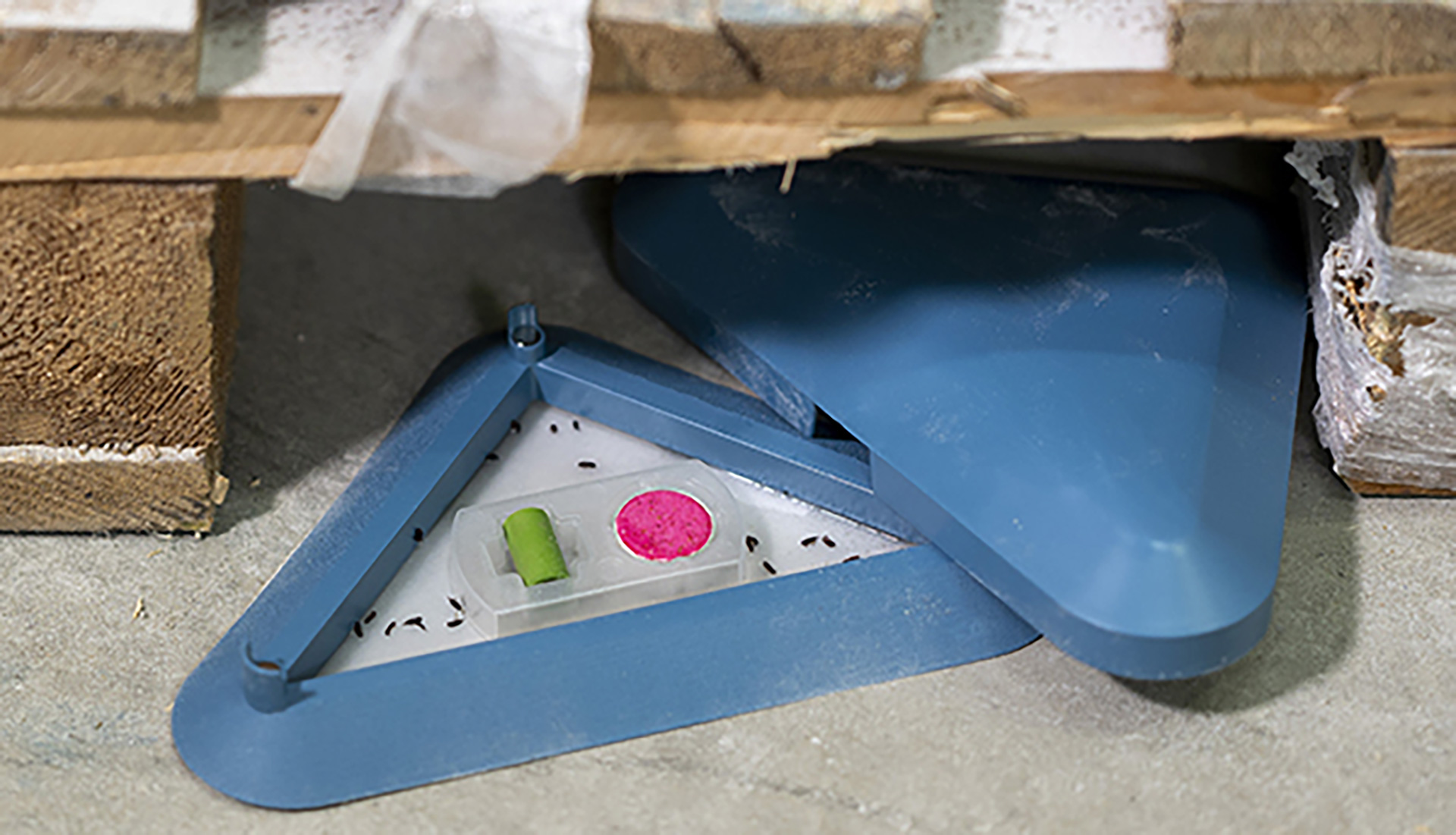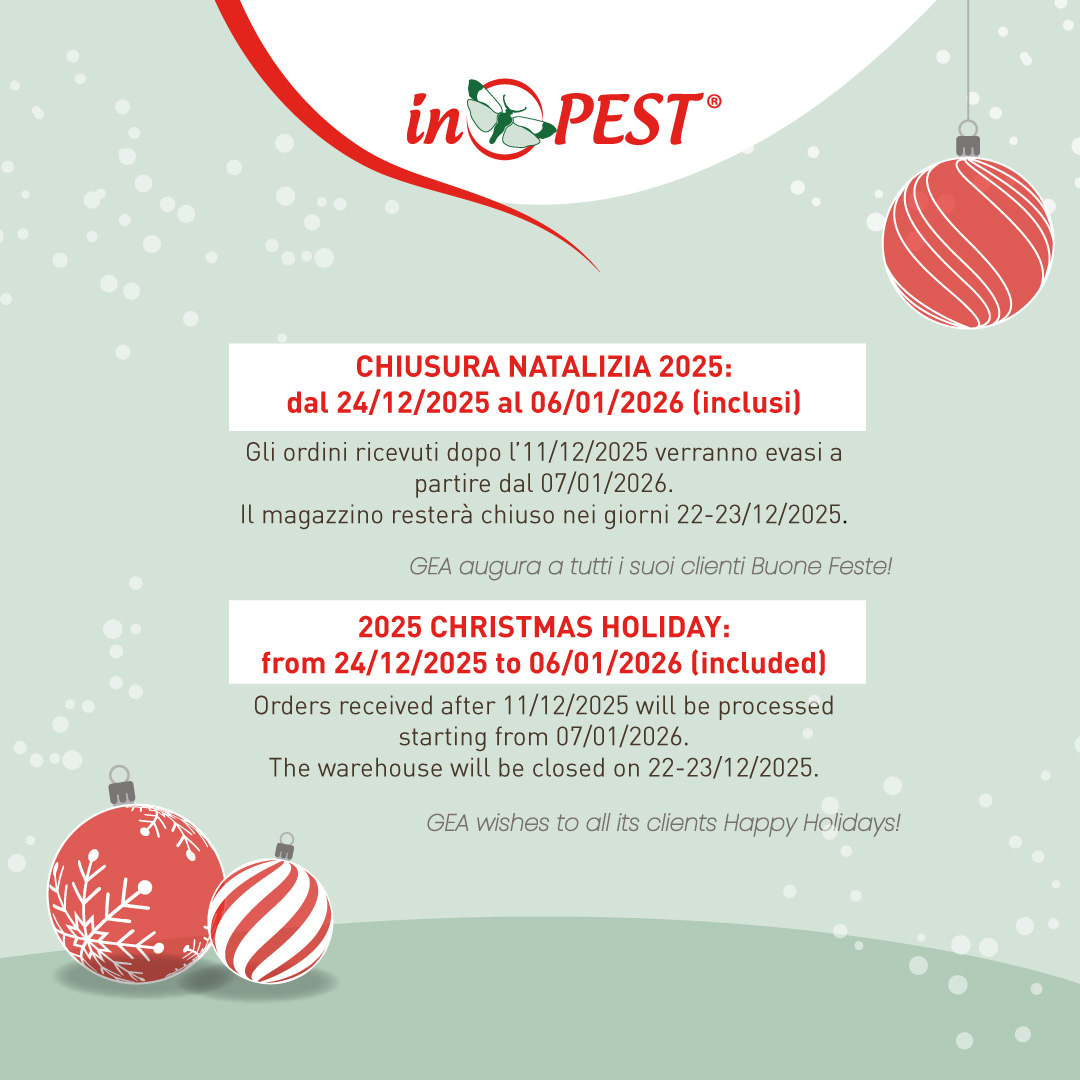Crawling insect infestation is one of the main critical issues for companies operating in food processing, storage and distribution. Species such as Tribolium spp., Sitophilus spp., Lasioderma serricorne, Oryzaephilus spp., Trogoderma spp., Cryptolestes ferrugineus, Rhyzopertha dominica and Liposcelidi pose a constant threat to food quality, causing contamination, damage to packaging materials and serious economic repercussions.
To ensure compliance with food safety regulations and prevent the risk of infestation, it is essential to implement an effective monitoring system. Flash Oil 3 Way Phero Pack is an innovative solution designed for the early detection of pests, offering the food industry an advanced method of control and prevention.
Food pests: an invisible threat
Gli insetti striscianti delle derrate attaccano una vasta gamma di prodotti alimentari.
- Sitophilus spp. e Tribolium spp. sono particolarmente dannosi per il grano, il riso e i cereali.
- Lasioderma serricorne infesta tabacco e spezie, specialmente in ambienti caldo-umidi.
- Oryzaephilus spp. e Trogoderma spp. compromettono la qualità di farine, prodotti da forno e cacao.
- Cryptolestes ferrugineus e Rhyzopertha dominica proliferano negli alimenti secchi e stoccati in condizioni di ventilazione ridotta.
The presence of these species can lead to insect contamination, loss of raw materials, damage to the production chain and non-compliance with BRC and IFS standards, resulting in penalties and negative impacts on the company’s reputation.
Flash Oil Phero Pack + Flash Oil Magnetic Trap: advanced monitoring for the food industry
Flash Oil Phero Pack is a detection system designed to intercept crawling insects quickly and effectively.
Main features:
Triangular PET plastic structure, resistant and designed for industrial environments.
Attractant system integrated with PHERO-SI MULTISPECIES (P-01058) and MULTISPECIES TAB (P-01154), specific for monitoring multiple pest species.
Oil-soaked filter paper, which prevents captured insects from escaping and ensures more reliable monitoring.
To be combined with Flash Oil Magnetic Trap for optimal protection in dusty or humid environments.
Where and how to use Flash Oil Phero Pack
The device is recommended for:
- Food companies: bakeries, pasta factories, confectionery industries and raw material processing plants.
- Warehouses and supermarkets: storage of cereals, flour, cocoa and other dry foods.
- Herbalist shops and pantries: protection of natural and organic products.
- Ovens and proofing rooms: monitoring in environments with high temperatures and controlled humidity.
- Poorly lit areas and critical points in the supply chain: monitoring in areas prone to infestation.
- The recommended frequency of checks is fortnightly, with replacement of the trap every two months, or earlier in the event of high infestation, high dust or humidity.
Why choose Flash Oil Phero Pack
- Proactive monitoring for timely identification of pests.
- Broad-spectrum attractants for detecting multiple species.
- Compliance with BRC and IFS standards, supporting companies in pest control management.
- Guaranteed efficiency even in critical environments, combined with its protective Flash Oil Magnetic Trap shell.
Continuous pest control is essential to ensure food safety and compliance with the quality standards required by the industry. Flash Oil Phero Pack is a reliable solution for preventing damage and contamination, protecting the quality of foodstuffs.

